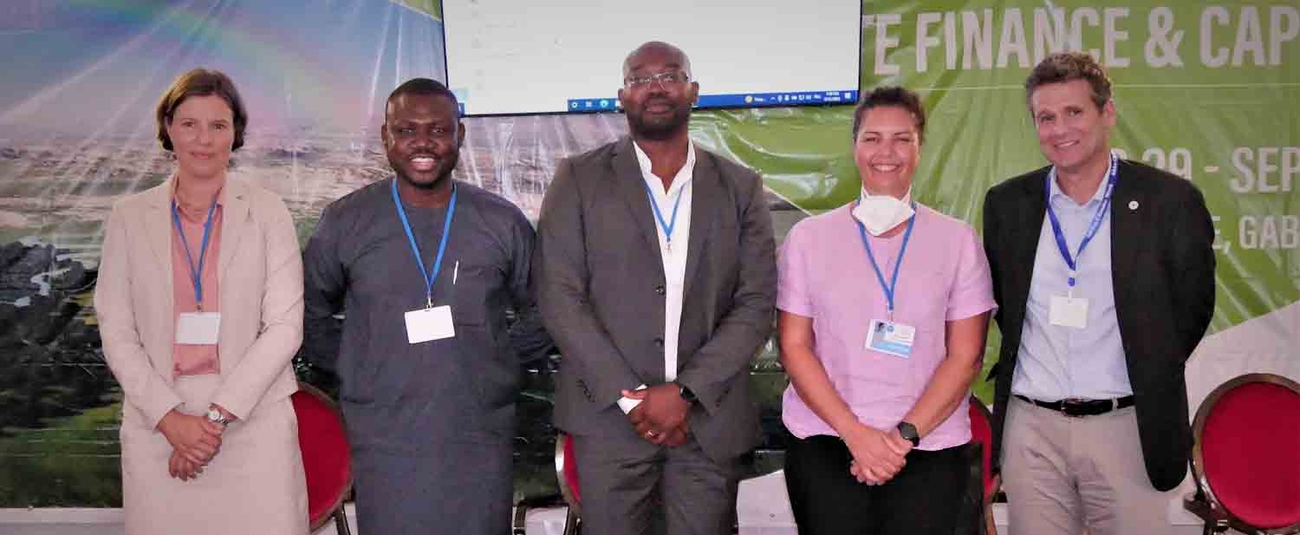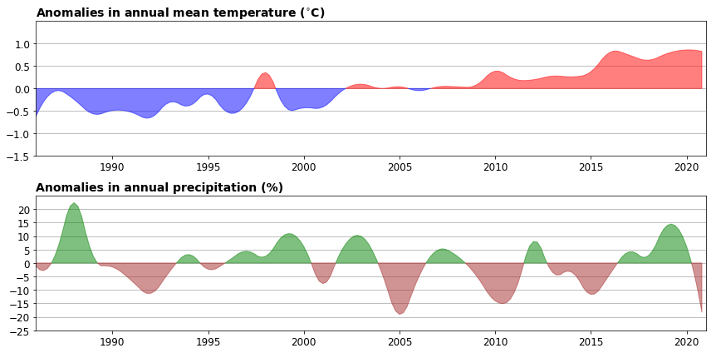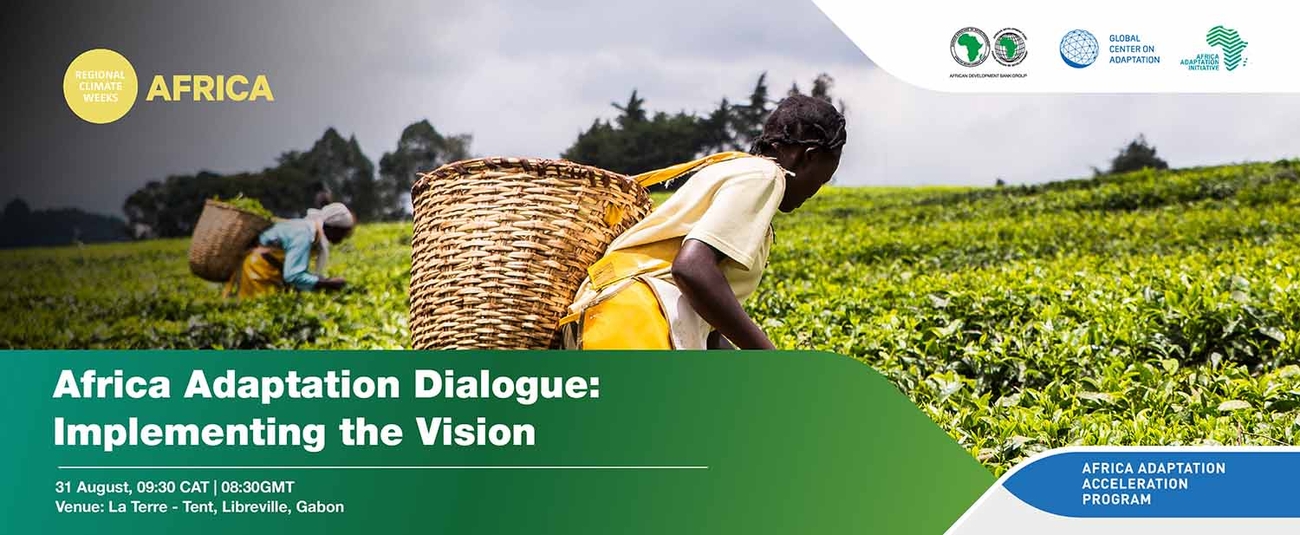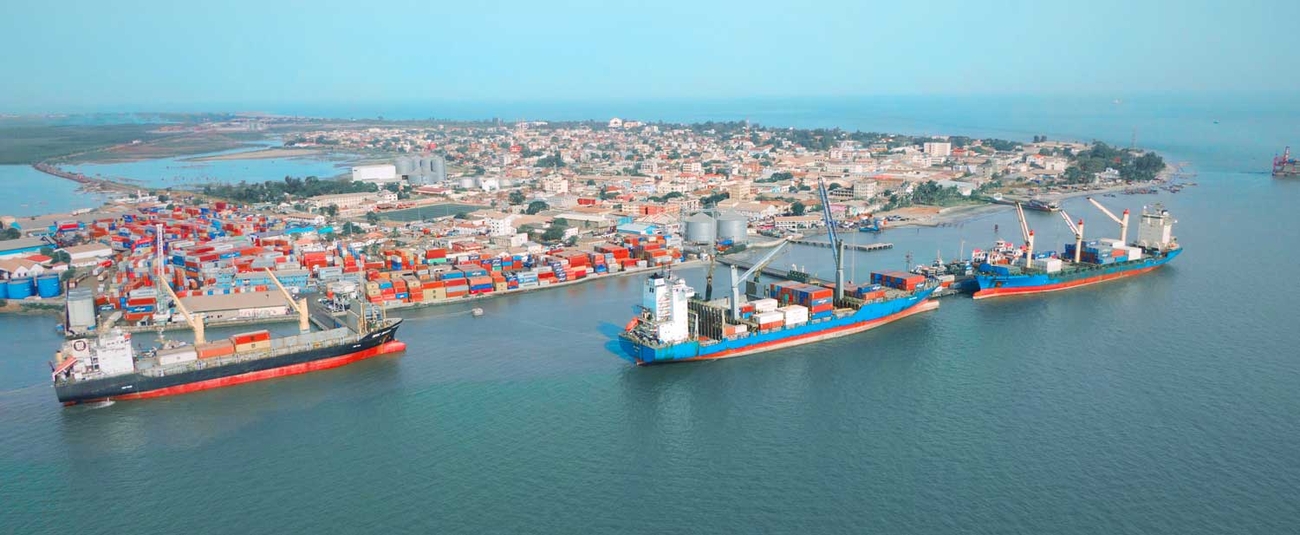
AAAP in the Media
Displaying 1 - 11 of 11
Can today’s Adaptation Action minimize future losses and damages in Africa?

On the sidelines of the 2022 edition of Africa Climate Week(link is external), a session titled Limiting Loss and Damage through Enhanced Adaptation Action in Africa featured vibrant and timely discussion of an aspect of climate change that typically receives little attention: capturing and assessing the costs and damages associated with climate change.
The African Development Bank and Germany’s Konrad Adenauer Foundation hosted the event, which provided a forum for panelists and participants to discuss the importance of defining and evaluating such losses and damages of properties, economies, lives and livelihoods due to climate disasters. Africa is acknowledged to be the continent most vulnerable to climate change.
Moderator Olufunso Somorin, a Regional Principal Officer at the African Development Bank, opened the discussion. He pointed out that it is important for African countries to measure climate-change related loss and damage to enable appropriate quantification and well-designed responses best suited to country context. It was also important to capture those losses occurred even in instances where preventive climate adaptation actions had been taken, he added.
Fatten Agad, Africa Climate Foundation’s Senior Advisor on Climate Diplomacy and Geopolitics, called for production of a report that would serve as guidance and baseline for evaluating climate related losses and damage. “It has already been demonstrated that the socio-economic impact faced by African countries in coping with the Covid-19 crisis has been very high, and adding a burden of financing something such as loss and damage would be unfair,” she said.
Anja Beretta, Konrad Adenauer’s Director for Energy Security and Climate Change in Africa, urged African countries to integrate mechanisms to address losses and damage into their Nationally Determined Contributions (NDCs). She also called for designated institutions and functioning structures to ensure the efficient and effective use of climate finance to advance the discussion on financial flows into loss and damage.
Stephane Bonamy, Head of the Regional Delegation for the International Committee of the Red Cross in Cameroon, said, for countries that face both conflict and climate change impacts, it is imperative that preventive measures are put in place early enough to reduce the extent of loss and damage faced and lessen the burden on communities.” He noted that 14 of the 25 most vulnerable countries to climate change impacts worldwide also face some form of conflict.
Dr Olumide Abimbola, the Executive Director of the Africa Policy Research Institute in Berlin reiterated the need for more African examples of past and current loss and damage to be incorporated into textbooks and journals.
There was agreement among the participants on the need for Africa to prioritize timely, comprehensive and large-scale adaptation action to avert or minimize future losses and damages.
There was also consensus on the urgent need to scale up financial flows from public and private sources into adaptation action across Africa. They cited the African Development Bank’s Africa Adaptation Acceleration Program, a joint initiative with the Global Center on Adaptation, as a positive example. The program seeks to mobilize $25 billion over five years to accelerate and scale climate adaptation actions across the continent.
Participants also called for new strategic partnerships to drive adaptation policies, plans and investments in Africa through the implementation of NDCs and tapping synergies with such initiatives as the Africa Disaster Risk Financing program.
About the African Climate Week (ACW)
ACW is an annual event that engages and empowers stakeholders to drive climate action across countries, communities and economies. The event is organized by UN Climate Change in collaboration with global partners UN Development Programme, UN Environment Programme and the World Bank Group. Partners in the region include the Africa Union, the Africa Development Bank, the UN Economic Commission for Africa (UNECA). ACW 2022 was hosted in Gabon.
Africa Adaptation Dialogue: implementing the vision at the Africa Climate Week
What: Africa Adaptation Dialogue: implementing the vision
When: 31 August 09:30 - 10:30 CAT
Where: Libreville, Gabon
Who: Global Center on Adaptation; Africa Adaptation Initiative (Chaired by Gabon); African Development Bank
Despite contributing the least to global warming, Africa finds itself on the frontline of the climate emergency, with the impacts of external shocks exacerbating these vulnerabilities. Indeed, large portions of Africa—particularly the drylands that cover three-fifths of the continent—are warming at a rate twice the global average, putting half a billion people at risk.
Chaired by Gabon, the Africa Adaptation Initiative (AAI) aims to strengthen collaboration on adaptation across the continent. To implement this vision, the Global Center on Adaptation and the African Development Bank have jointly developed the Africa Adaptation Acceleration Program – AAAP. This Africa-led, Africa-owned response is mobilizing $25 billion for climate adaptation investments in the continent over five years. This event will review progress of the AAAP and how it is contributing to narrowing the finance gap, thus accelerating the implementation of AAI.
Program
- Welcome Remarks by the Moderator
Davinah Milenge Uwella – Principal Programme Coordinator, African Development Bank
- Opening Video
- Opening Remarks
Dr. Kevin Kariuki – Vice President, Power, Energy, Climate Change and Green Growth, AfDB
- Framing remarks: The Africa Adaptation Initiative and the AAA
Tanguy Gahouma-Bekale – Special Advisor to His Excellency Ali Bongo Ondimba, President of the Gabonese Republic, Permanent Secretary of the National Climate Council
- The AAAP as the vehicle to implement the AAI vision
Prof. Anthony Nyong – Senior Director, and Africa Regional Director, Global Center on Adaptation
AAAP voices from the field
- AAAP partners and beneficiaries
Moderated discussion with participants
- Wrap up by the Moderator
Multi-Stakeholder Dialogue on Climate Risk Assessment and adaptation options prioritization for the Transgabonaise road corridor PPP project
What: This is a private event
Where: Global - Virtual
When: 19 April 2023, 0:00
This first Multi-Stakeholder Climate Risk Dialogue will present the preliminary results of the high-resolution climate hazard modelling outcomes, and vulnerability assessment of the road corridor project.
Event description:
As part of the Global Center on Adaptation’s support to the Transgabonaise road corridor project under the Africa Adaptation Acceleration Program (AAAP), a Multi-Stakeholder Climate Risk Dialogue was organized to present results from the climate risk assessment with the African Development Bank, and project partners including the Societe Autiroutiere du Gabon (SAG), and the government of Gabon’s departments of Environment, Weather, and transport.
Historical weather trends, in Gabon, show an increase in mean annual temperatures of +1ºC since 1981, and decrease in mean annual rainfall, at an average rate of 3.8 mm per month per decade since 1960, with regional disparities. The technical assistance provided by the GCA will support an in-depth understanding of future climate hazards under different climate change scenarios, and across the different regions crossed by the 900km road corridor, and led to identify and provide a cost-benefit analysis of adaptation and resilience options to mitigate these current and future climate hazards.

Figure 1: Climatology in Gabon: Historic evolution and trends, Source GCA – study from Royal Haskoning, Lobelia Earth, April 2023.
This First Multi-Stakeholder Climate Risk Dialogue will present the preliminary results of the high-resolution climate hazard modelling outcomes, and vulnerability assessment of the road corridor project. Especially, the project stakeholders will discuss the main climate hazards that have been highlighted, including extreme temperatures, extreme precipitation, drought intensity, and how these climate events might impact the assets and transport services. The discussion with local stakeholders will contribute to ensure robustness of the project outcomes.
Africa Adaptation Dialogue: implementing the vision

What: Africa Adaptation Dialogue: implementing the vision
When: 31 August 09:30 - 10:30 CAT
Where: Libreville, Gabon
Who: Global Center on Adaptation; Africa Adaptation Initiative (Chaired by Gabon); African Development Bank
Despite contributing the least to global warming, Africa finds itself on the frontline of the climate emergency, with the impacts of external shocks exacerbating these vulnerabilities. Indeed, large portions of Africa—particularly the drylands that cover three-fifths of the continent—are warming at a rate twice the global average, putting half a billion people at risk.
Chaired by Gabon, the Africa Adaptation Initiative (AAI) aims to strengthen collaboration on adaptation across the continent. To implement this vision, the Global Center on Adaptation and the African Development Bank have jointly developed the Africa Adaptation Acceleration Program – AAAP. This Africa-led, Africa-owned response is mobilizing $25 billion for climate adaptation investments in the continent over five years. This event will review progress of the AAAP and how it is contributing to narrowing the finance gap, thus accelerating the implementation of AAI.
Program
- Welcome Remarks by the Moderator
Davinah Milenge Uwella – Principal Programme Coordinator, African Development Bank
- Opening Video
- Opening Remarks
Dr. Kevin Kariuki – Vice President, Power, Energy, Climate Change and Green Growth, AfDB
- Framing remarks: The Africa Adaptation Initiative and the AAA
Tanguy Gahouma-Bekale – Special Advisor to His Excellency Ali Bongo Ondimba, President of the Gabonese Republic, Permanent Secretary of the National Climate Council
- The AAAP as the vehicle to implement the AAI vision
Prof. Anthony Nyong – Senior Director, and Africa Regional Director, Global Center on Adaptation
AAAP voices from the field
- AAAP partners and beneficiaries
Moderated discussion with participants
- Wrap up by the Moderator
Gabon –The Transgabonaise Road Project
With improvements to the road, rail, shipping and aviation networks a key government goal, Gabon’s transport sector is undergoing a major transformation. While population pressure is modest, with around 1.7m people in the country, existing links are limited; the two largest cities, Libreville and Port-Gentil, had, until work began on one recently, no road connection.
The 828 km long Transgabonaise road is key as it connects Libreville (the capital and coastal city) and Franceville (third Gabonese city after Port-Gentil). It comprises several segments of the Routes Nationales (RN) 1 to 4. Despite its strategic importance, the road has suffered from substantial deterioration due to a lack of maintenance and increased traffic over the last decade, caused by the increase of population and lumbering.
The projects is supporting the rehabilitation of a succession of national roads in Gabon to make it a more efficient logistics axis.
Transgabonaise Road Project is divided into three stages:
- Libreville -AlembéStage
- Alembé -Mikouyi (via Lalara, Koumameyong, Booué, Carrefour Leroy)
- Mikouyi -Franceville
- High-resolution, asset-level climate risk and vulnerability assessments to quantify key climate hazards and associated risks to the road infrastructure assets along the entire road corridor
- Innovative solutions for climate smart transport asset management: Based on specific hazards identified including nature-based solutions (NBS) to optimize the resilience of the assets
- Operational performance metrics and standards for the service level agreement (SLA) based on the direct and indirect climate-related damages identified
- Improvement in the capacity and quality of the road infrastructure
- Creation of over 1,000 direct jobs and over 9,000 indirect jobs
- Saving on operational costs and travel time impacting both households and private sector development though lower transport costs
- Generation of safety benefits and lower greenhouse gas emissions
- Additional 200 billion CFA (or $302.4 million) to Gabon’s GDP (equivalent to ~1.9% according to the 2021 GDP)
- Increased connectivity within Gabon and with neighboring countries such as Cameroon, Equatorial Guinea and Congo-Brazzaville
- Promote economic growth through ease of transportation of goods and services efficiently, allowing businesses to access larger markets and expand their operations
- increased trade, investment, and tourism, stimulating economic development in both urban and rural areas in Gabon
- Enhances regional integration and cooperation by facilitating the movement of people, goods, and services across borders, fostering trade relationships and cultural exchange
- Improve accessibility to remote areas, providing people with better opportunities for education, healthcare, employment, and social services
USD 99.2 million
The Gambia: African Development Bank commits grants of $20.56 million to further upgrade Banjul port

The Board of Directors of the African Development Fund (ADF), the concessional window of the African Development Bank Group, on Thursday approved grants worth $20.56 million to finance the fourth expansion of Banjul Port in The Gambia.
The funding comprises an ADF grant of $13.71 million and another $6.85 million grant from the Transition Support Facility window. The project will also receive a $450,000 grant from the Africa Adaptation Acceleration Programme (AAAP) a joint initiative of the African Development Bank and the Global Centre on Adaptation, for technical assistance to mainstream climate resilience into the expansion. AAAP will use cutting-edge climate analytics to identify and quantify the impacts of physical climate risk on the port infrastructure and provide adaptation investment options to climate-proof it.
The expansion will be financed in parallel with a private investor who will be selected competitively by the Gambian government. The World Bank and the African Development Bank supported the Banjul Port’s previous expansions.
The fourth expansion program entails an extension of the port jetty by 345 meters to accommodate up to three ships simultaneously instead of one currently. It also provides for the expansion of the container terminal area by 22,000 m2 to create space for unloading ships, replacement of a non-functioning ferry plying the Banjul and Bara crossing and widening port access roads by 3km to ease congestion. Information and communication processing systems will also be procured for efficient linkages between customs and the terminal operating system.
Upgrading the port will significantly reduce ship turnaround time and cut costly congestion and surcharges, enabling reductions in sea freight costs and demurrage payments. The works will boost the facility’s capacity to meet growing traffic and improve efficiency in operations and management as it digitizes its procedures. The introduction of green and low-carbon emission ferries will make the port infrastructure more climate-friendly and climate-resilient. The project is also expected to empower women's groups through gender-sensitive procurement and provide jobs, especially for the youth.
At the end of November 2022, the Bank Group had 12 active operations in The Gambia, valued at $166.6 million. Eighty percent (80%) of these are financed through its ADF window. The transport sector represents 55.6% of the portfolio, the largest share, followed by agriculture and rural development with 24%. Energy sector projects constitute 12% of the portfolio.
Contact:
Kwasi Kpodo, Communication and External Relations Department, African Development Bank, email: media@afdb.org(link sends e-mail)
GAMBIA National Transport Risk and Resilience Assessment
Transport systems are a key enabler for trans-sectorial development in The Gambia. The Gambia has a land area that stretches 450 km along the Gambia River, dividing the South and the North banks of the river, and is surrounded by the Senegal except for its 60 km Atlantic Ocean front. The national transport system contributes to geographical integration across the banks of the river and facilitates cross-border Nort-South traffic within Senegal. Strengthening the transport system will therefore also strengthen essential commercial links and reinforce access to social and economic facilities.
The country’s transport system relies on: (i) roads (primary inter-urban trunk roads, secondary gravel surfaces roads, urban roads mainly in the Greater Banjul area), (ii) air transport with the Banjul International Airport, and (iii) maritime and fluvial transport with the Port of Banjul and the river. The Gambia National Transport Policy (2018 – 2027) highlights the key objectives for the development of the transport sector:
- Improving access to Isolated Regions within the country,
- Addressing the mobility needs of the growing population while urbanization rate is increasing,
- Improving integration across transportation modes,
- Reestablishing the river, currently under-utilized, as a backbone component of the National Transport System,
- Overall, reinforcing safety-systems, regulations, institutional capacity fostering transport infrastructure financing and private sector involvement.
The National Transport Policy links investments in transport with other sectoral outcomes around Trade, Agriculture, Tourism, and public / private sector relations policies.
The project aims to quantify transport infrastructure adaptation needs and provide a prioritized and evidence-based list of adaptation and resilience solutions that could be integrated in the upcoming transport infrastructure development investments.
Learning from the implementation in Ghana, the Africa Adaptation Acceleration Program will provide technical assistance to include climate adaptation and resilience solutions in the Integrated Transport Master Plan.
- Data collection and analysis for transport assets and existing services (including spatial data on trade flows, access to healthcare, and other social and economic factors)
- High resolution spatial analysis and climate modelling of transportation infrastructure and expected hazards in different climate scenarios
- Climate Risks assessment with direct and indirect damages caused by projected climate change. This assessment will quantify financial, economic, and social damages, including impacts on women and vulnerable communities.
- Identify, appraise, and prioritize adaptation and resilience options
- Prioritized and financed pipeline of climate resilient transport infrastructure projects in the Gambia
- Identified wins for transport sector investments that can be linked to planned investments
- A strong basis for developing tools and methodologies that can be scaled up more rapidly by other partners, including MDBs
- Assessed and quantified climate risk for transport infrastructure, mentorship, and resources to thrive
- Identified, appraised, and prioritized adaptation and resilience options
- Link the national assessment with MDB investment planning cycles and other downstream investment planning opportunities
3000,000 Euros (AAAP Upstream Facility)
African Development Bank, Global Center on Adaptation host dialogue to look at climate risks facing Gambia’s Port of Banjul Fourth Expansion Project

The African Development Bank and the Global Center on Adaptation hosted a virtual dialogue on Monday last week to discuss climate adaptation related to the Port of Banjul Fourth Expansion Project in Gambia.
The proposed project will increase cargo handling and storage capacity of the terminal in order to cope with increasing cargo volumes and trade.
The dialogue was attended by officials from Gambia’s Port Authority, the National Environment Agency, the National Roads Authority, the Department of Fisheries, the Department of Parks and Wildlife Management, the Department of Water Resources, Maersk Line Gambia, clearing and forwarding agency HM Trading, the Great Institute and civil society. The discussions centered on the climate hazards the Port of Banjul is exposed to, and the impact of these hazards on the Port’s assets, operations, and services.
The African Development Bank and European Investment Bank are considering financing the proposed expansion of the Port of Banjul, estimated at $114 million. To this end, the African Development Bank has committed $531,275 to the Gambia Port Authority to finance a feasibility assessment and investment preparation studies to lay the groundwork for the project.
Within the framework of the Africa Adaptation Acceleration Program (AAAP) – a partnership between the African Development Bank and the Global Center on Adaptation (GCA), GCA is providing technical
assistance worth around €200,000 to mainstream climate resilience into the Expansion Project, utilizing cutting-edge climate analytics to identify and quantify the impacts of physical climate risk on the investment and provide adaptation investment options to climate-proof the investment.
The findings from the climate analytics revealed that climate hazards could lead to cumulative economic damage to the Port of Banjul estimated at $27 million over the next 30 years. This is about 23% of the estimated investment required to upgrade the Port of Banjul. It also emerged that the Port could lose up to 3% of its revenue annually due to the impacts of physical climate risks.
Gambia - Banjul Port 4th Expansion Project
The Banjul Port 4th Expansion Project aims to enhance port infrastructure capacity, facilitate trade facilitation and regional connectivity in the West African sub-region. This regional infrastructure project will enhance economic growth and poverty reduction whilst reducing the transaction costs associated with regional trade. The proposed Banjul Port expansion and modernization Project will also serve as a catalyst for strengthening The Gambia’s position as a major trade and transport corridor hub within the West Africa sub region.
The Port expansion aims to support the economic development of The Gambia, by enhancing its strategic position and competitiveness as a transit and trans-shipment hub in the wider West Africa region.
- Utilizing cutting-edge climate analytics to identify and quantify the impacts of physical climate risk on the investment
- Delivering high resolution climate risks assessments, adaptation and resilience investment options to climate-proof the investment against the impacts of physical climate risks
- Extension of the port jetty by 345 meters to accommodate up to three ships simultaneously instead of one currently
- Provide for the expansion of the container terminal area by 22,000 m2 to create space for unloading ships
- Replacement of a non-functioning ferry plying the Banjul and Bara crossing and widening port access roads by 3km to ease congestion
- Complete and widen the Bund Road access to facilitate traffic flow in and around the access roads leading to the Port of Banjul
- Relocate its current Head Office Complex away from the main operational zone
- Construct a new Container Terminal
- Procurement of Information and communication processing systems for efficient linkages between customs and the terminal operating system
- Significantly reduced ship turnaround time and cut costly congestion and surcharges, enabling reductions in sea freight costs and demurrage payments
- Boost the facility’s capacity to meet growing traffic and improve efficiency in operations and management as it digitizes its procedures
- Climate-friendly and climate-resilient port infrastructure by introduction of green and low-carbon emission ferries
- Empower women's groups through gender-sensitive procurement and provide jobs, especially for the youth
AfDB Investment of USD 44.5 Million of total USD 115 Million
Reinforcing Resilience to Food and Nutrition Insecurity in the Sahel (P2-P2RS)
The Sahel, which lies between the Sahara Desert to the north and tropical savannas to the south, is one of the largest semi-arid/arid sub-regions globally. As such, the region is highly vulnerable to climate change and other uncertainties. The impacts of climate change may have critical socio-economic consequences for the Sahel, including poor agricultural yields, increased frequency of natural disasters. Already, the number of people in the Sahel suffering from chronic food and nutrition insecurity, poverty and vulnerability to the effects of climate change is rising steadily.
A lasting solution to food and nutrition insecurity in the Sahel requires building resilience to climate change, long-term agricultural sector financing and developing trade and regional integration. Sustained, longer-term investments in household resilience can significantly reduce the cost of emergency assistance, ultimately breaking the cycle of recurring famine. This is the most cost-effective intervention option which meets the basic needs and preserves the dignity of the populations of the Sahel. This idea is central to the Programme to Build Resilience to Food and Nutrition Insecurity in the Sahel (P2RS)
The overall objective of the P2-P2RS is to contribute to the substantial improvement of the living conditions and the food and nutritional security of the populations of the Sahel region.
Specifically, the program aims to i) strengthen the resilience to climate change of agro-sylvo-pastoral producers, including through promotion of climate-smart agricultural technologies in the Sahel and the development of climate intelligent villages; ii) develop the agro-sylvo-pastoral value chains, including through the development and improvement of hydro, meteorology and climate services; and iii) support regional institutions (CILSS, APGMV, CCRS) to strengthen adaptive capacity in the Sahel.
- Design digital adaptation solutions (Digital Climate Advisory Services, DCAS) for the Sahel context
- Investment readiness and infrastructure, institutional and farmer capacity needs for DCAS
- Feasibility study to integrate DCAS into agricultural extension and agrometeorological advisory to smallholder farmers and pastoralists
- 1 million rural households have access to digital or data-enabled climate-smart technologies
- 500,000 smallholders have adopted adaptation practices
- 5 million smallholders have access to climate services;
- Development and improvement of hydro, meteorology and climate services
- The development of climate-intelligent villages
- Promotion of climate-smart agricultural technologies in the Sahel
- Resilience to food and nutrition security built for the targeted populations
USD 300 million